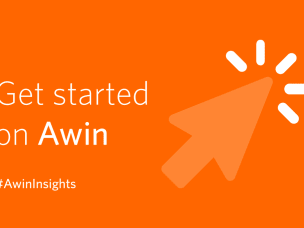Seven tips for boosting your affiliate conversions
Written by Emma Sharp on 7 minute read
In the days when cold calling was one of the top forms of marketing, numbers meant everything.

Knock on enough doors and eventually, someone would say yes to whatever was being offered. The aim was to knock on more doors to get more yeses.
But the savvy caller worked out that if they made small changes to their sales pitch, they didn’t have to knock on quite as many doors to get the same number of yeses. By tweaking what they said, or changing their approach, they could knock on fewer doors and still get the same number of yeses. This was known as their conversion rate and when it started to improve, they discovered they could do less work for the same results.
Let’s transfer this to online sales. Instead of a knock on a door, online marketing relies on visitors to websites. Increase traffic and sales will happen. But instead of only concentrating on driving more traffic, the smart affiliate marketers work on getting more affiliate conversions for the same amount of traffic. This is the equivalent of more yeses for fewer doors.
What is the average affiliate conversion rate?
As an advertiser, you rely on your publishers to send quality traffic to your affiliate offers. It’s then your job to ensure the conversion rate is as high as possible. Knowing the average affiliate conversion rate provides you with a good starting point to calculate whether your own conversion rates are on target or not.
The average conversion rate for affiliate marketing varies between networks. As an example, Awin currently has an average conversion rate of 3.6%. However, many advertisers want to know what is a good conversion rate for affiliate marketing, which is difficult to quantify as it differs so much between different industries. Four percent to 5% is a good aim, although some affiliate marketing programs reach 10% to 15% conversion rates. Research shows it can fluctuate between different companies as well as industries, but as a general rule of thumb aim for 3-4%. If you are not achieving figures like this, then you need to work on making some improvements but luckily, there are several things you can do to improve website conversions.
Within the Awin interface, publishers can use each advertiser’s CAVE data (Conversion rate, Approval percentage, Earnings per click, Validation period) to see average conversion rate per program and assess how they’re performing against other publishers.
How to increase conversions on your website

1. Make sure the marketing material matches what is on the landing page
If your publishers are extolling the virtues of your products with specific marketing messages, when they then hit the landing page it must meet the buyer’s expectations. If the reality of the product is completely different from the advertisement, they will quickly leave without making a purchase. If the buyer is excited enough to click on the ad and then they find exactly what they are looking for, your conversion rate will increase. As an advertiser, you can provide suitable content for your publishers to use, which should be branded to maintain consistency and brand awareness. It is very important that the publishers you are working with do not make unfounded claims about your products, and as the advertiser, you need to double-check this.
2. Optimize your website with split-testing
Even the smallest difference can improve website conversions but each change needs to be tested to see what works best. Start with the original page and create a new page with one minor change such as a different color button. Test these two pages against each other for a set time. Whichever page has the most conversions becomes the new control.
Make another small change, such as the layout of the sign-up form, and test again. Keep repeating this process. Sometimes a tweak will result in a decreased conversion rate so keep using the highest performing option as your control. You can also work with a third-party technology, known as multi-variant testing tools, which can help automate the process and showcase the best features and conversion options for your customer base. There are several split-testing tools available such as Kameleoon and Optimizely.
3. Load speed and ease of use
The internet is a crowded place and consumers tend to have a short attention span. If your product landing page that your publishers’ are linking to doesn’t load quickly, users will get frustrated and click away and affect your conversion rates. Your landing page must also be easy to use, read and navigate. Use plenty of white space and appealing images, and consider black text against a white background. It’s also crucial that it is optimized for mobile as more and more consumers use their phones to browse and make purchases. A hard-to-read page optimized for PC screens is not going to keep them reading from mobiles for long. Also, with Google’s mobile-first indexing a site that does not perform well on mobile will not be ranked highly.
4. Use testimonials
Social proof is one of the highest accolades a product can have, with more and more people seeking out reviews and testimonials before committing to the purchase. Make sure the landing page that your publishers are linking to includes a range of quality testimonials. If it is a brand new product, give it away in exchange for unbiased reviews and testimonials that you can then post.
5. Strong call-to-action
Consumers want a clear direction when on a web page and often need help on how to navigate to the next step. Your call-to-action needs to be very clear and above the fold (the part of the page that appears on screen before the user has to scroll down). If they do take the time to scroll and read more, include the call-to-action at various points to capture them at whatever stage they are at as they read. Some consumers need to read the whole page, whereas others will make a decision halfway down.
6. Avoid multiple exit routes
The landing page for the product should only provide the buyer with the option to purchase the product. There should be no leakage opportunities for the user to follow that can not be tracked back to the advertiser who referred the user, such as chat windows, untrackable phone numbers, or other advertising material on the page that allows the user to click away, such as Google Ads.
7. Work with high performing, quality publishers
Quality over quantity still rings true. Dedicate your time to partnering with the top publishers who are strong within your niche, have an enthusiastic and engaging audience and who work hard on creating sales. Offer a decent incentive to the high performing publishers to keep them on board. Also, consider paying out commissions based on a publisher’s overall contribution to the sale rather than on a last-click basis, as this rewards all publishers for their part in the process.
However, the most important aspect of the whole process is your product. You must start with a product that people want. Before launching your program and implementing all of the above, check there is a demand for what you have on offer. If, after market research, you still believe in the viability of your product, your job is to expose it to a large audience with the help of your advertisers and then make it easy for people to go to the next step and click to buy.
If you have ever asked the question, how do I get more conversions, don’t forget to track every form of conversion that you offer, including phone calls, sign ups, online chats, and direct visits to retail stores. Your conversion rate might be better than you originally thought. If your conversion rates still need work, test each of the points above and you should start to see those all-important figures start to improve.



